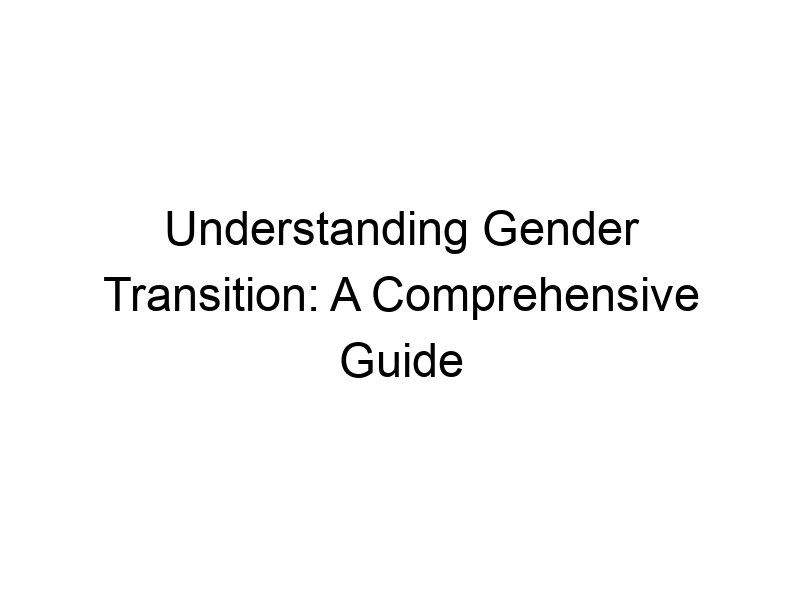Understanding the journey of gender transition is complex and deeply personal. This guide aims to provide comprehensive information and resources for individuals exploring or undergoing this transformative process. It’s important to remember that every individual’s experience is unique, and this guide serves as a starting point for learning and understanding the multifaceted aspects of how to become a shemale. We will explore the physical, emotional, social, and legal considerations involved in this process.
The term “shemale” is a controversial and often offensive term used to describe transgender women. It’s crucial to approach this topic with sensitivity and respect. While some individuals may use the term themselves, many find it derogatory. This guide aims to use respectful and accurate terminology, prioritizing the individual’s self-identified gender.
Transitioning is a personal journey with no single “right” way.
It’s a process that encompasses many facets, including emotional, social, and physical aspects.
Emotional and Psychological Preparation
Self-Discovery and Acceptance
This stage involves coming to terms with one’s gender identity and exploring the implications of transitioning. It often requires introspection, self-reflection, and possibly professional guidance from therapists specializing in gender identity.
Social Transition
Coming Out
This process involves sharing one’s transgender identity with family, friends, colleagues, and others. It’s a deeply personal decision with varying degrees of support received.
Legal Considerations
Changing Legal Documents
Changing legal documents such as driver’s licenses and passports to reflect one’s affirmed gender often requires specific documentation and procedures that vary by jurisdiction.
Medical Transition: Hormone Replacement Therapy (HRT)
Understanding HRT
HRT involves taking hormones to align physical characteristics with one’s gender identity. This process requires medical supervision and involves careful monitoring.
Medical Transition: Surgery
Types of Gender-Affirming Surgeries
Gender-affirming surgeries include various procedures, such as breast augmentation or reduction, facial feminization, and genital surgeries. These decisions are highly personal and require extensive consultation with surgeons.
Social Support and Community
Finding Support Groups
Connecting with support groups and communities is invaluable for navigating the challenges and joys of transition. These groups provide a safe space for sharing experiences, finding encouragement, and building connections.
Navigating Challenges and Obstacles
Dealing with Discrimination and Prejudice
Sadly, transgender individuals often face discrimination and prejudice in various aspects of life. It’s crucial to have a strong support system and strategies for coping with such negativity.
Financial Considerations
Cost of Transition
Gender transition can be expensive, including hormone therapy, surgeries, and other related expenses. Understanding funding options, insurance coverage, and support programs is important.
The Role of Mental Health Professionals
Therapists and Counselors
Mental health professionals specializing in gender identity play a vital role in providing support, guidance, and therapy throughout the transition process.
Building Self-Esteem and Confidence
Self-Care and Affirmation
Developing self-esteem and confidence is a crucial part of the transition journey. Self-care practices, positive self-affirmation, and focusing on personal growth are essential.
Maintaining Privacy and Security Online
Online Safety Tips
Protecting personal information online is vital. Use strong passwords, be mindful of social media privacy settings, and consider using VPNs for added security. ProtonVPN and Windscribe are examples of services that offer encrypted connections.
The Importance of Self-Acceptance and Self-Love
Embracing Authenticity
The core of a successful transition is self-acceptance and self-love. Embracing one’s true self is the foundation of a fulfilling and authentic life.
Long-Term Well-being and Health
Ongoing Care and Monitoring
Long-term well-being requires ongoing care and monitoring. Regular check-ups with healthcare providers, including hormone monitoring and mental health support, are crucial.
Understanding the Differences Between Male and Female Transition
Specific Considerations for Each Path
The specific steps and considerations for male-to-female (MTF) and female-to-male (FTM) transitions vary, requiring tailored approaches to medical and social aspects.
Addressing Societal Misconceptions and Stigma
Education and Advocacy
Challenging societal misconceptions and reducing stigma are crucial steps towards creating a more inclusive and accepting environment for transgender individuals.
Frequently Asked Questions
What are the main stages of gender transition?
The transition process is often broken down into social transition (changing one’s name and presentation), medical transition (hormone replacement therapy and surgeries), and legal transition (changing legal documents).
How long does it take to transition?
The timeline is highly individual and depends on the chosen methods. Some people transition quickly, others take years.
Is hormone replacement therapy (HRT) necessary for transition?
No, HRT is a personal choice. Many individuals feel it’s necessary to align their physical characteristics with their gender identity, while others choose not to undergo HRT.
What kind of support is available for transgender people?
Many support groups, therapists, and organizations provide support and resources. Local LGBTQ+ centers are excellent starting points.
Are there any legal restrictions around transitioning?
Legal restrictions vary significantly by location and are subject to change. It’s advisable to research local laws and seek legal counsel if needed.
What are the risks of gender-affirming surgeries?
As with any surgery, risks exist, including infection, complications from anesthesia, and potential need for revision surgeries. Thorough consultation with surgeons is essential.
Final Thoughts
The journey of gender transition is a profoundly personal and transformative experience. It’s a process of self-discovery, self-acceptance, and embracing one’s authentic self. Understanding the complexities of this journey, including the emotional, social, medical, and legal aspects, is crucial. This guide offers a comprehensive overview, but remember to seek professional advice and connect with support networks for guidance tailored to your individual needs. This is your journey, and you deserve support and understanding every step of the way. Remember to prioritize your well-being and seek help when needed. Resources abound, and finding the right support system can make all the difference. Embrace the process, celebrate your identity, and live authentically.

